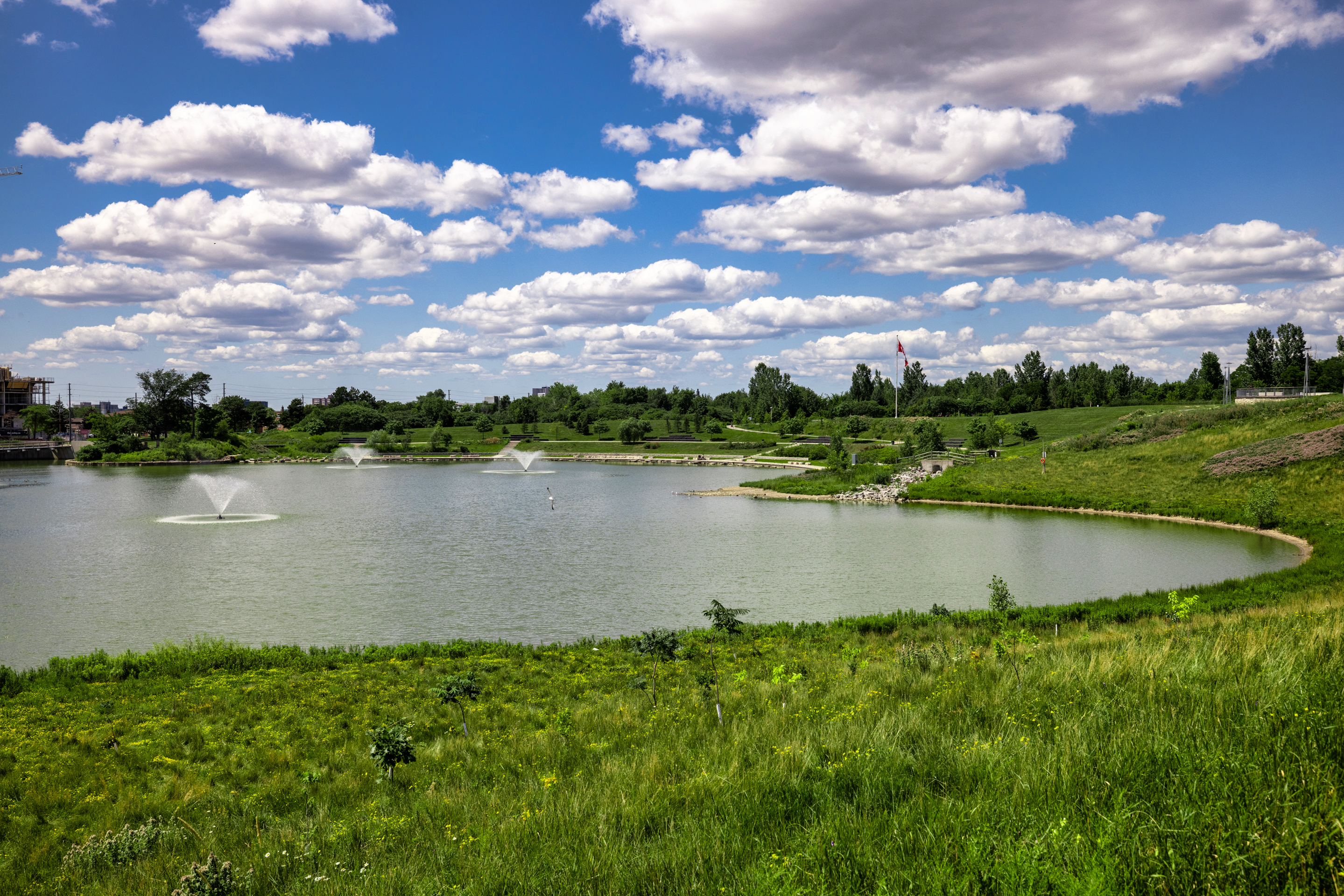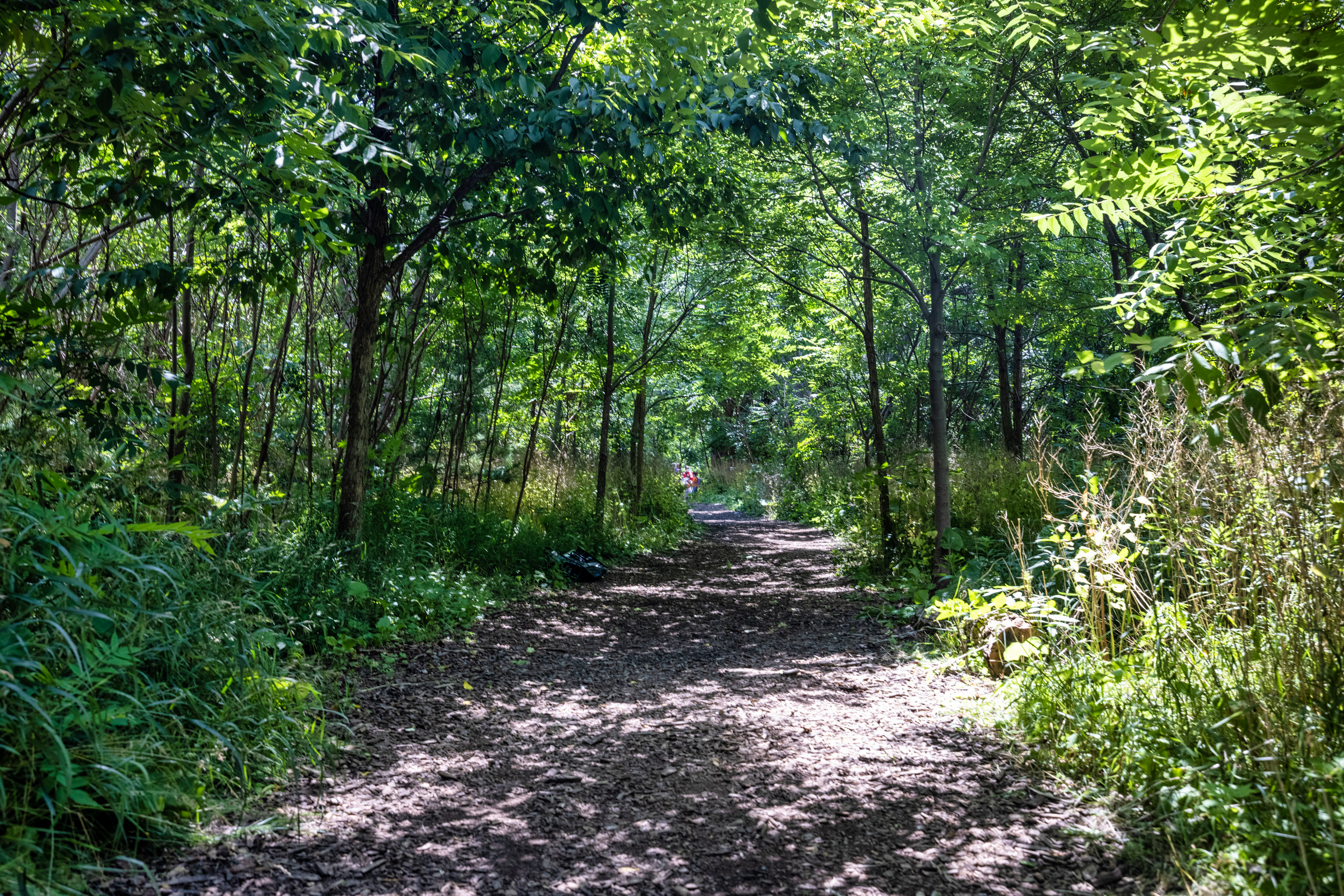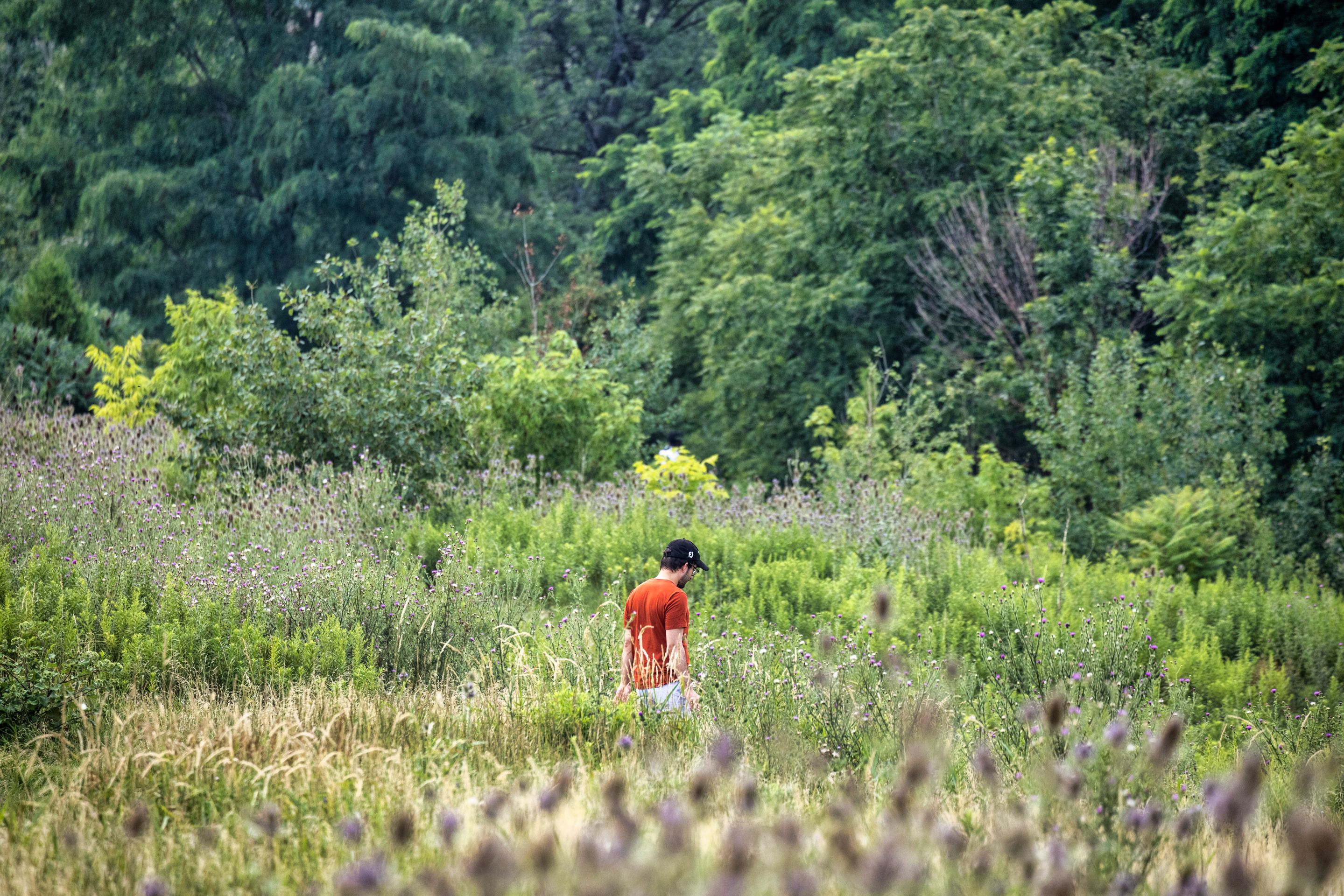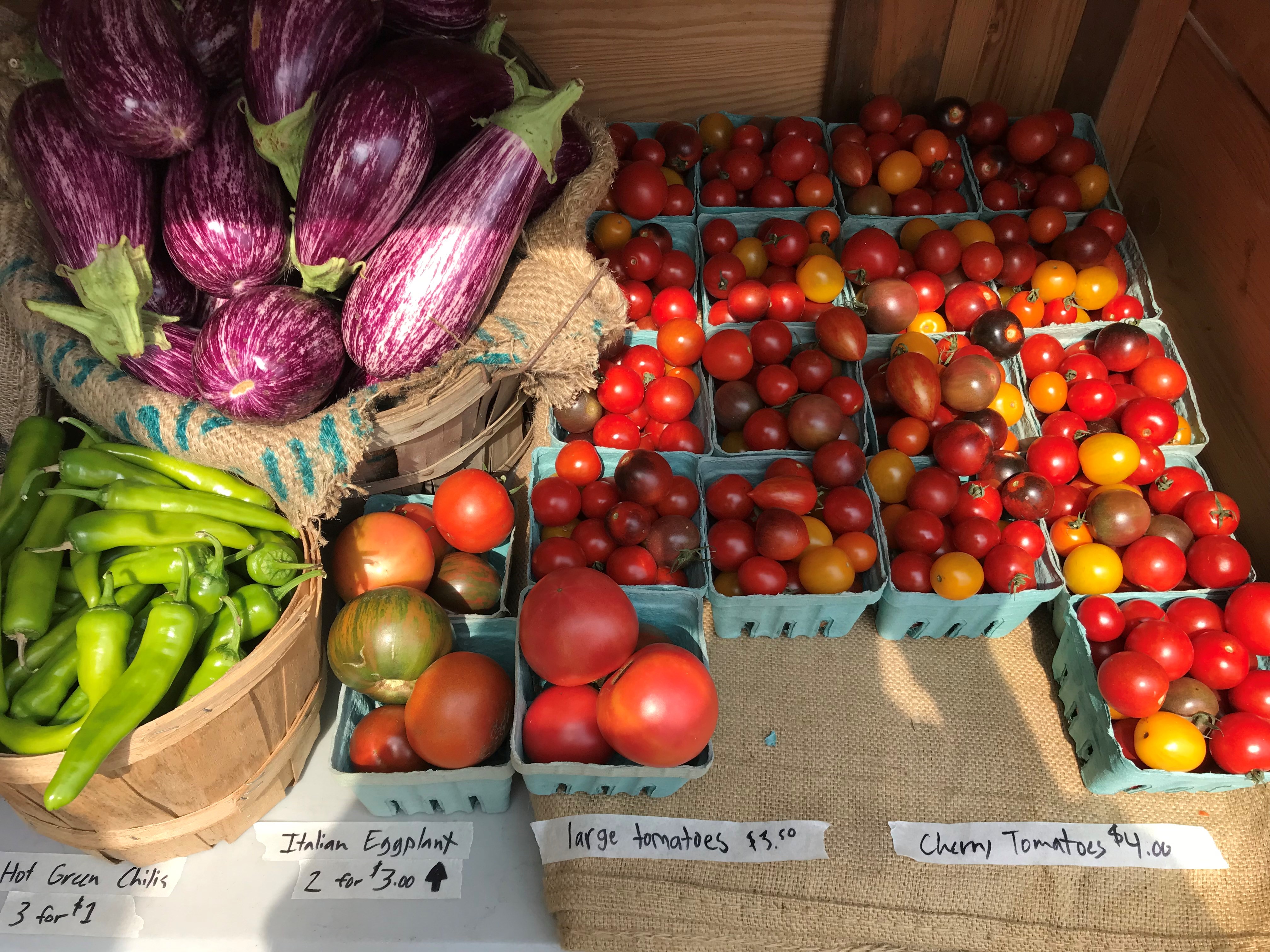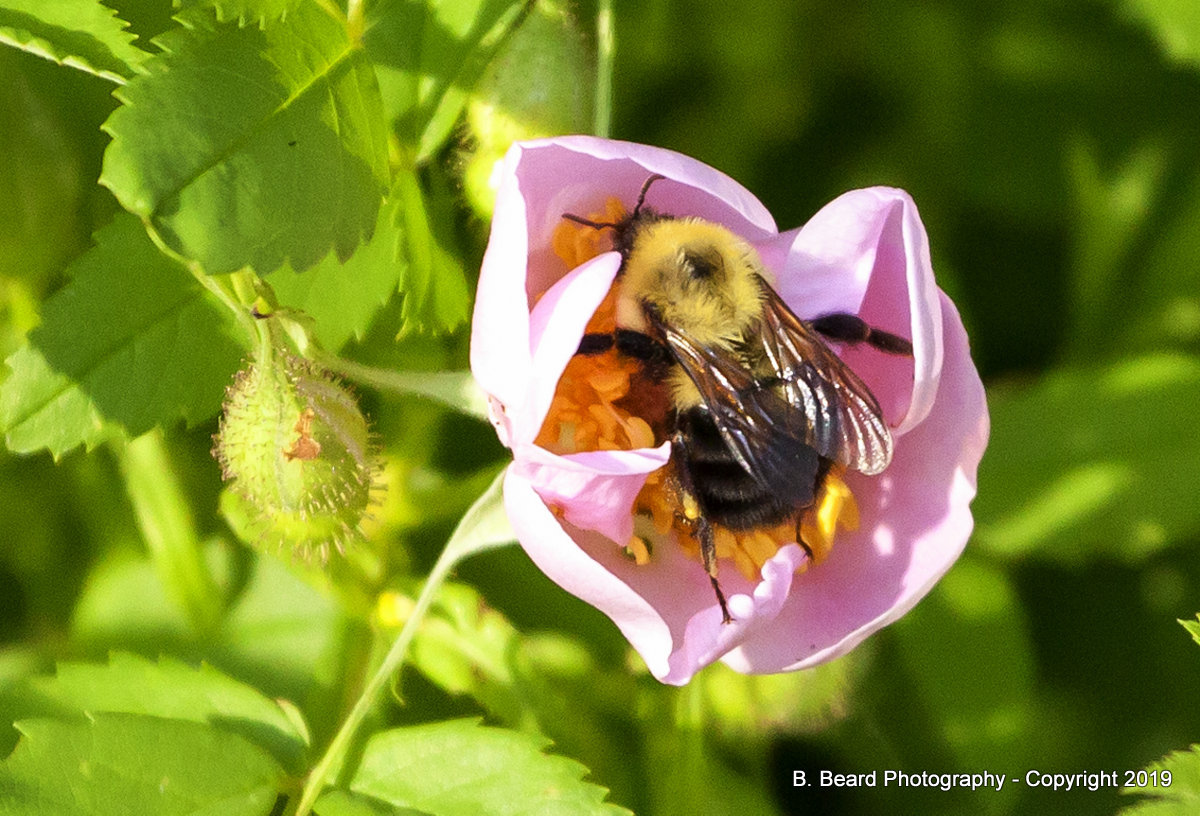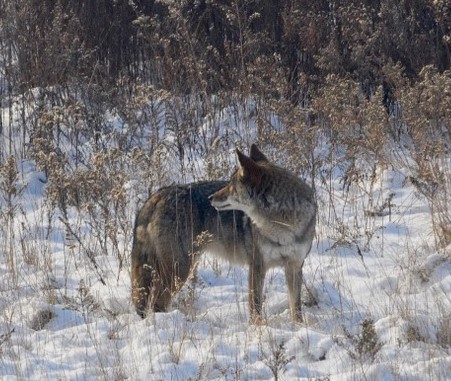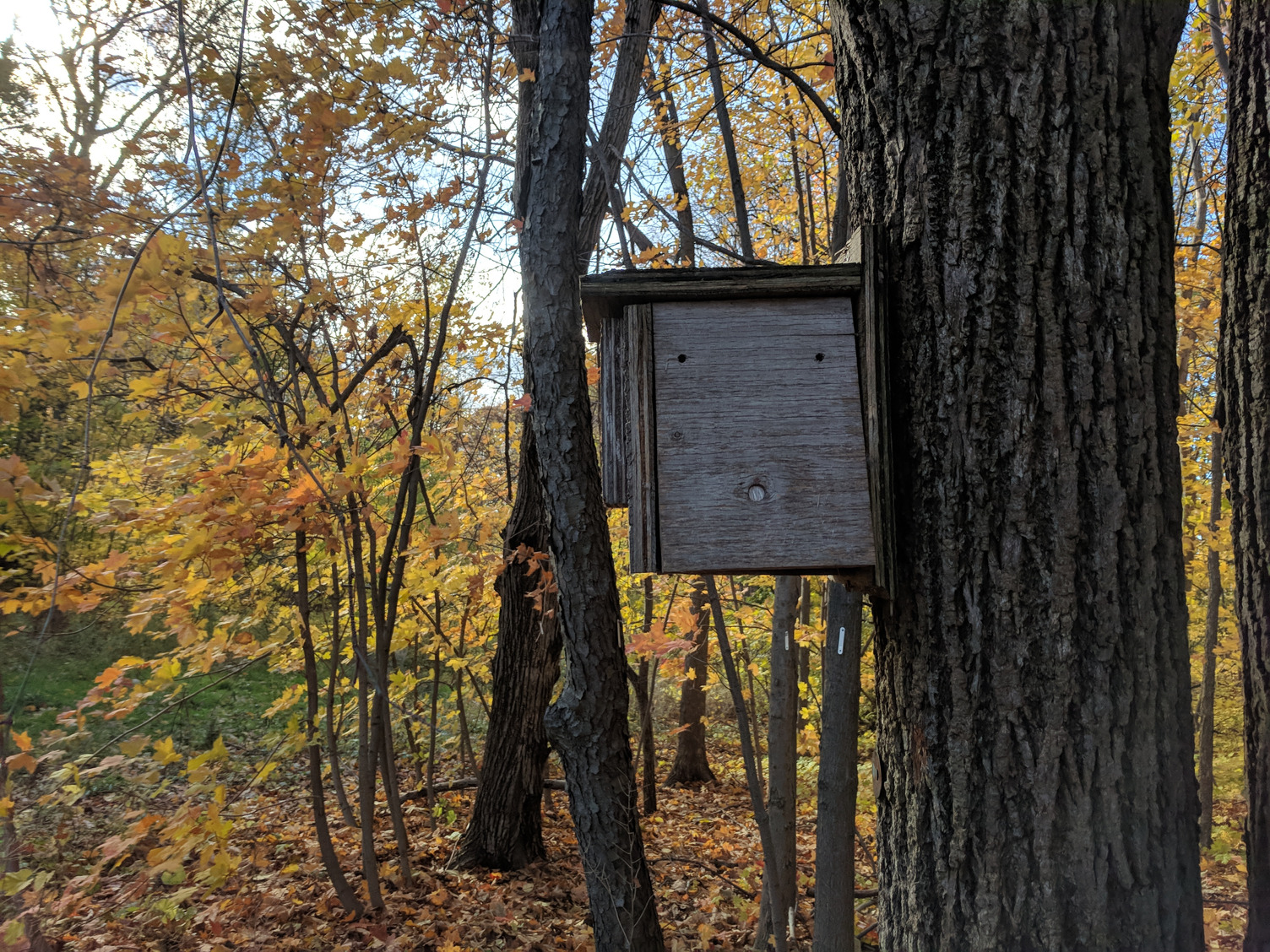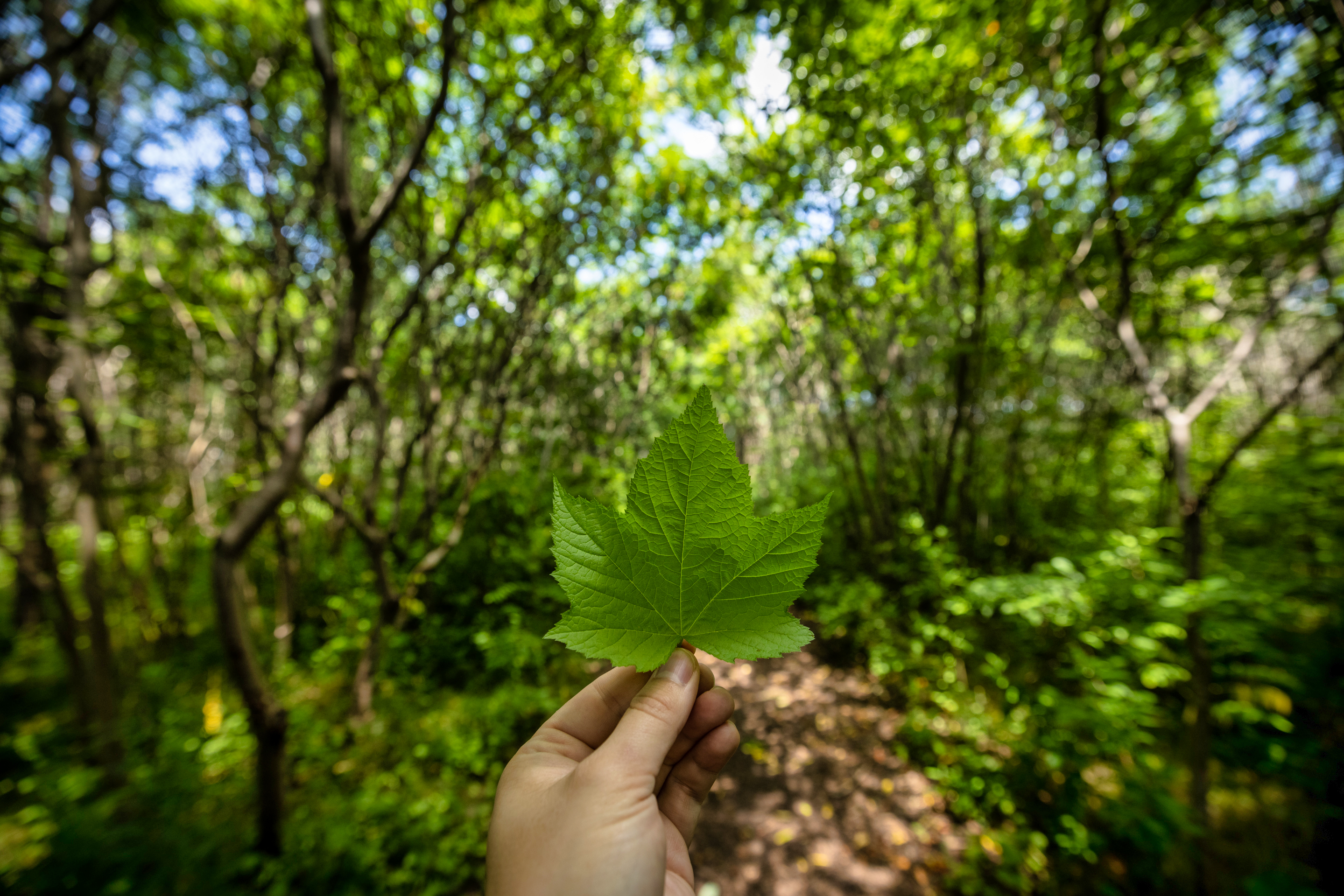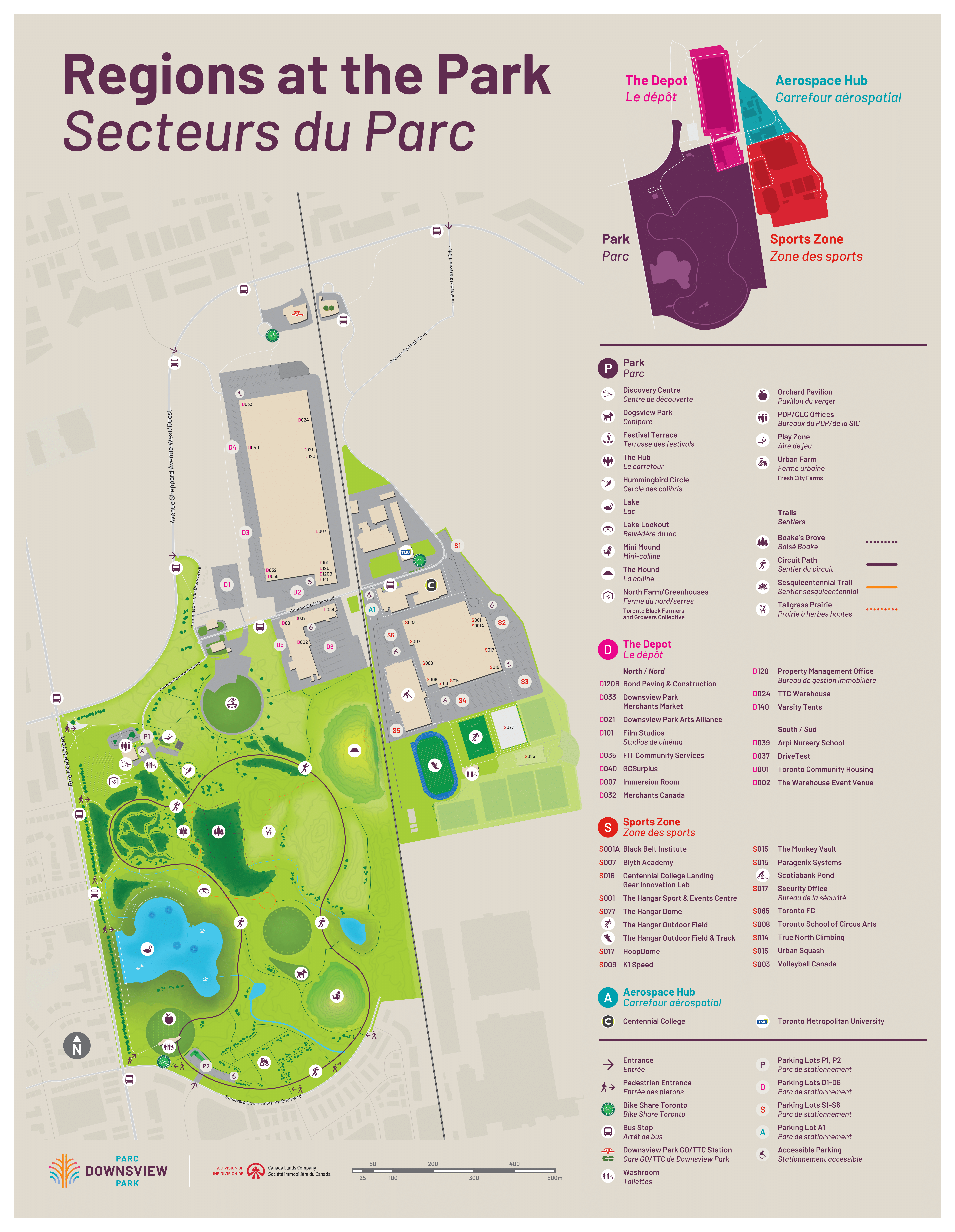Sustainability
Wellbeing for all forever.
It’s perhaps our favourite phrase here at the Park, and one that we repeat at the start of every education program. Why? Because it reminds us of the importance of sustainability – that in everything we do, we should meet the needs of people today without compromising those of future generations. From the way our Park was designed, to the initiatives that we lead and to the programs we offer at our Discovery Centre, sustainability is at the core of everything we do.
Here are a few of our most recent sustainability initiatives.
Stormwater Management System
Young Urban Forest
Tallgrass Prairie
Urban Agriculture
Protecting Pollintors
Wildlife at the Park
Initiatives & Projects
Education Programs & Partnerships
Stormwater Management System
Stormwater Management System
Did you know that we have a built-in stormwater management system at the Park? It was designed to handle a drainage area of 173 hectares/427 acres, which includes 48 hectares/119 acres of the nearby Downsview Lands. It is made up of a 3.6-hectare/9-acre Lake and three Ponds that act as filtration beds, an Urban Forest, a Tallgrass Prairie, a Meadow, an Orchard and several bioswales (vegetated, shallow depressions designed to capture and treat stormwater runoff). All these parts work together to direct the excess water and slow it down. This not only reduces flooding but also gives nature more time to filter the water as it makes its way back, into the Black Creek water system, and then eventually into the Humber River!
FAQ
How does the system benefit water quality?
It allows for an enhanced level of water treatment, removing around 80 per cent of suspended solids from runoff.
How does the system impact water balance in the Park?
It enhances the water balance within the Park by capturing and managing annual rainfall. Thanks to the system, more rainfall can be retained on-site and disposed of naturally through infiltration (the process by which water on the ground surface enters the soil), evaporation (the movement of surface water to the air) and transpiration (the conversion of water from liquid to gas as it passes through leaves, stems and flowers).
Is it possible for the system to overflow?
It is highly unlikely, as it is designed to handle runoff up to a 100-year rainfall event. This is a rainfall event that is expected to be equalled or exceeded once every 100 years, it also has a one per cent chance of occurring each year.
How deep is the Lake?
The maximum depth of the Lake is three-to-four metres!
What roles do the Urban Forest, Tallgrass Prairie, Meadow and Orchard play in the system?
The Urban Forest, Tallgrass Prairie, Meadow and Orchard all enhance the Park’s ability to retain water. The forest canopy can retain approximately 12 millimetres of rainfall, while the Meadow is able to retain approximately 10-12 millimetres of rainfall. They also play a part in enhancing the water balance in the Park through evapotranspiration. Evapotranspiration is the sum of evaporation from the land surface plus transpiration from plants.
Young Urban Forest
Young Urban Forest
Most of the trees on-site are less than 20 years old! In 2005, work began with the removal of old roads, curbs, parking lots and underground utilities. Areas were reshaped to help with water drainage and prepare for future site elements like the Circuit Path. One of the most important tasks was to prepare the soil so it could support healthy plants.
Because the soil was clay based and heavily compacted, it was “deep-soiled,” or churned up, to a depth of 60 centimetres/two feet to make the soil porous for fresh air and water exchange. On top of this, a 10-centimetre-deep layer of composted leaves was added. In total, 16,000 cubic metres of compost were mixed into the soil—that’s equal to five Olympic pools of water.
No soil was exported or imported to the Park and all removed materials, such as concrete and asphalt, were recycled and reapplied to on-site projects whenever possible. Any topsoil that was removed during regrading was reapplied where needed.
The Park’s sustainability efforts began with the construction of bioswales to naturally filter runoff and improve water drainage, followed by soil restoration through grass seeding to prevent erosion and support healthy ecosystems. Since 2007, thousands of dedicated volunteers have helped plant and maintain the Urban Forest, creating a thriving habitat for local wildlife.
Phase Two of the project focuses on safeguarding the forest ecosystem while deepening community engagement, with work continuing through December 2027. Key initiatives include planting native species, removing invasive plants, improving habitat protection, and installing interactive signage to support education and exploration. Through ecological monitoring and thoughtful design, we aim to create vibrant, biodiverse spaces and invite the community to connect with nature through stewardship events.
Downsview Park relies on the assistance of many public and corporate volunteers to maintain and plant the Urban Forest. We would like to thank the thousands of volunteers who have worked through rain, sleet, sun and snow to help plant trees and maintain the forest since 2007.
More than 15 years after the first tree was planted, we now have a robust forest that is home to wildlife that thrive in their natural habitat. To maintain it as an anchor for wildlife and a sustainable green space for generations to come, we are working towards understanding what’s working and what improvements are needed. In the long term, we are hoping to diversify our plants (favouring those that are naturally occurring in the ecosystem and who can withstand an increased frequency of major weather events), improve habitat spaces, and provide you with more opportunities to connect with nature. In September 2021, we began our Urban Forest Resilience Project to do just that and ensure that our young forest will grow old and thrive for many decades to come.
This three-year project is supported by TD Bank Group. Over the course of this initiative, we will be asking for your help to make this project thrive!
Some key parts of this project and ways to get involved are:
Ecological assessment and monitoring plan
- Learning about the flora and fauna of Downsview
- Creation of a forest management plan on how to protect and expand it for the future
Community Participation
- Feedback and opportunities for the community to assist in planning long-term health of the forest
Participation in community initiatives such as:
- Invasive species removal, planting events and other stewardship initiatives
- Park Ambassador Program
-Community nature programsGet Involved with Us!
Volunteer Opportunities: Help with planting, monitoring, and more
TD Bank Group - Green Spaces
"At TD, we believe we have an obligation to future generations to take care of our planet. Our dedication to developing green spaces is an integral part of how we support communities across North America. We’re committed to helping create a more Vibrant Planet by continuing to grow and enhance green spaces for everyone to enjoy. The benefits are not only environmental, but social, economic and health related."
The woodlot, a remnant from one of the homesteads of the Boake family, is what we now call Boake’s Grove, which is a part of the Urban Forest. It can be found east of the Sesqui Trail and west of the Tallgrass Prairie. To learn more about Boake’s Grove, please see the Urban Forest & Boake’s Grove page.
Tallgrass Prairie
Tallgrass Prairie
In 2016, in partnership with Tallgrass Ontario, we began preparing the site that would become our Tallgrass Prairie. For a tallgrass plant community to be successfully established, it is necessary to conduct extensive vegetation control during the initial year of site preparation.
Downsview Park has also established a number of tallgrass prairie test plots throughout the Park. Thirty-seven species of native grasses and flowers were seeded in one test plot, giving us information about how well these species establish in Downsview Park’s microclimates. The test plots have also been used for seed collection, growing plugs in the greenhouse.
In the fall of 2016, the site was tilled and seeded with an oat cover crop. This cover crop played the crucial role of stabilizing the site, by reducing erosion from wind and water and preventing non-native seeds from establishing themselves on it. The oats then died off in the winter, leaving the site ready for prairie planting and seeding!
In June 2017, our staff and volunteers were able to plant 600 tallgrass plugs during our Prairie Party event. A little later, the site was seeded with 26 native prairie species. The prairie continues to establish the deep roots needed for a healthy prairie; we anticipate that this root establishment phase will continue for many years. We continue to monitor establishment success and maintain the prairie to prevent the growth of invasive species.
In recent years, students from Madonna Catholic Secondary School have contributed to the prairie by growing and planting prairie plants.
To learn more a bit more about this project and FAQ, please see the Tallgrass Prairie page.
Urban Agriculture
Urban Agriculture
Good food close to home is at the heart of the Urban Agriculture project.
Farmers, without the use of pesticides, are growing healthy food in Downsview Park.
Wondering what is growing, or how to get involved?
Visit the Urban Agriculture page for details.
Protecting Pollinators
Protecting Pollinators
One of Toronto’s largest urban greenspaces, Downsview Park is committed to sustainability, and is doing its part to support pollinator populations.
- Each year Downsview Park welcomes more than 10,000 teachers, studentsand other participants from across the province to our programs that focus on sustainability – how people today can live in a way to ensure that there is wellbeing for all, forever. To learn more about the park’s school programs, community field trips or community nature programs, go to Learn & Connect.
- With the generous support of the TD Friends of the Environment Foundation, Downsview Park is installing a hummingbird habitat, and inviting community members to help plant native species that will provide habitat and food to pollinating birds and insects. Planting sessions take place Sunday September 11, 2022, from 10 a.m. to noon, and from 1 to 3 p.m. For more information or to register, go to Nature Connection: Hummingbirds
- Members of the Downsview Park team are certified through the Monarch Teacher Network to raise wild monarch butterflies in support of conservation and education efforts.
- Downsview Park features a registered Monarch Way Station located east of 70 Canuck Avenue building, beside the parking lot.
- The Park is proud to be a location for urban bee populations, in partnership with researchers from York University. To learn more about this past project, go to www.macivorlab.ca/ .
- Downsview Park staff regularly lead seed ball (seed bomb) making activities, teaching participants how to combine soil, clay and native seed mixes to create a “seed ball” that they can plant in naturalized areas to support pollinators.
- The park is a proud partner of Project Swallowtail, hosting volunteer-led initiatives to establish and protect habitats for swallowtail butterflies.
- The annual Downsview Sunflower Challenge grows native sunflowers at the Park and distributes plants in the community to help support pollinators.
Wildlife at the Park
Wildlife at The Park
Downsview Park is a thriving habitat for thousands of species, rich in life and biodiversity.
Explore the incredible diversity of wildlife.
Visit the Wildlife at Downsview Park page for details.
Initiatives & Projects
Initiatives & Projects
We’ve also launched and participated in a series of green initiatives and projects that promote sustainability, including:
Our Stewardship Initiative
Stewardship at Downsview Park typically takes the form of planting seeds, trees or tagging and removing invasive species (which protects biodiversity), and it’s something we often do with school and community groups. In the past, there have also been opportunities to tend to a teaching garden and grow produce used for programming.
Our Bird Box Initiative
Downsview Park, in partnership with students and teachers from William Lyon Mackenzie Collegiate Institute, have constructed and strategically placed nine bird boxes at various locations throughout the Park and in the nearby Downsview Lands to provide a breeding habitat for cavity nesting birds such as tree swallows, blue birds, American kestrels and screech owls.
The Bring Back the Salmon Project
For more than 10 years, the Discovery Centre has participated in the Bring Back the Salmon Project. Our education team raise 100 Atlantic Salmon from eggs until they’re large enough to be released into local waterways. Atlantic Salmon, once in abundance around the Greater Toronto Area, were pushed out of the area by overfishing and degradation of waterways during industrialization.
Moth Night at Downsview Park
Downsview Park, in partnership with the Toronto Entomology Association, held an inaugural moth night in 2021. Special lights were set up to attract a variety of nocturnal insects. The night was a success: more than 50 species of moth were identified in the Park’s forests.
Bat Boxes
We have put up boxes in four areas around the Park as part of the Urban Forest Resilience project in summer 2024. They were added to Upper Pond, Prairie, Orchard and Stanley Green Storm Water Management (Downsview Park Blvd and George Butchart Drive). These boxes were recommended by our consultants as important habitat creation. Some benefits of bats can be found here.
Education Programs & Partnerships
Education Programs & Partnerships
Our education and community programs are also centered on themes of sustainability, and over the years have been in collaboration with a diverse range of tenants including:
• Toronto Wildlife Centre
• Toronto Beekeepers’ Collective
• Toronto Black Farmers and Growers Collective
In addition to this, our education programs are proudly supported by TD Bank Group through two of their sustainability-focused initiatives:
• TD Friends of the Environment Foundation
• TD Ready Commitment

